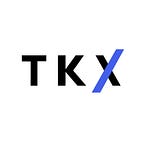GMX v2: An Overview | TKX Weekly
by @Guaaronnnn
editor @FriedWagyuu
GMX v1 has been widely recognized as one of the most successful protocols in the DeFi derivative space, offering a straightforward yet effective model for liquidity providers and traders. As the cornerstone of the Arbitrum DeFi ecosystem, numerous protocols and strategies have been developed around GMX. However, despite its success, GMX v1 is not without its limitations. As we anticipate the arrival of GMX v2, we will explore its new features and how they address the challenges identified in v1.
Intro
GMX v2 addresses three main issues:
Limited tradable assets
Currently, GMX offers five assets (BTC, ETH, UNI, LINK & AVAX), while competitors offer up to 50. Despite BTC and ETH accounting for more than 50% of total volume, traders often seek to trade other assets based on market events and trends.
Imbalanced open interest with high risk to LPs
The GLP model introduced borrow fees, charging both long and short positions, but failed to balance both sides of the pool, leading to larger exposure to trader performance.
General exposure to a basket of assets for LPs
GLP exposes providers to a diverse asset basket, complicating hedging and potentially including undesired assets.
What’s New?
Adjust open/close fees from 0.1% to 0.05%
GMX v1 currently has the highest fees at 0.1% compared to other players, with dydx at 0.02%-0.05% and GNS at 0.08%. Adjusting the fees to 0.05% will make them more competitive.
Introduce funding fees
Introducing funding fees will balance new pools better in terms of GLP, which is a positive development for LPs. It will reduce their exposure to trader P&L, potentially even to zero in fully balanced cases.
Implement price impact
With price impact, traders are incentivized to correct open interest (OI) skew through positive or negative price impact. If a trade reduces skew, it has a positive impact, whereas if it increases skew, it has a negative impact.
Price impact is a factor that affects trades where the user wants to trade a larger size than what is available on the rest of the market for the selected asset. Additionally, including a price impact calculation solves the problem of oracle manipulation in low-volume coins.
New liquidity provision mechanism
The new liquidity provision model in GMX v2 offers increased flexibility and scalability by collateralizing volatile markets in ETH for longs and USDC for shorts. Each pair’s liquidity is isolated, allowing providers to select pairs based on their risk/return preferences.
However, the trade-off is that bootstrapping liquidity will be a more challenging process due to fragmentation, which may cause some pools to struggle to attract sufficient liquidity.
Expansion of tradable markets
GMX v2 allows adding tradable pairs without requiring liquidity providers’ asset exposure. Some markets will use ETH and stablecoins as collateral, while others will use the asset itself. To prevent under-collateralization in profitable long trades, an Auto-Deleveraging (ADL) feature will be introduced. Additionally, a price impact calculation will help prevent oracle manipulation in low-volume coins.
Thoughts
- With GMX v2, trading fees will be reduced. Small and mid-size traders will benefit from significantly lower fees (around 50% of current ones) and an improved user experience. However, depending on the impact of the new price impact mechanism on large trades, some of the largest traders might prefer the GLP model due to its current zero price impact in v1.
- GMX v2 will enable liquidity providers to improve their risk management and implement delta-neutral strategies effectively base on the isolated pools.
- Separating liquidity pools for each pair, making bootstrapping liquidity more challenging than using GLP. Over a medium to long timeframe, liquidity remains a crucial driver and the most enduring competitive advantage.
- To maintain its competitive edge, GMX should prioritize being one of the most liquid platforms, as this attracts large traders who contribute significantly to fee generation in any DeFi project. This strategy offers a more sustainable competitive advantage compared to other approaches, such as price reduction.
Reference
https://github.com/gmx-io/gmx-synthetics
https://blog.rudy.capital/unveiling-gmx-v2-a-game-changer-for-defi-derivatives-5ff20f2ab731
https://twitter.com/NintendoDoomed/status/1643556571241410560
https://twitter.com/crypto_noodles/status/1658454676281647107
About TKX CAPITAL
Website: TKX.CAPITAL
Twitter: @TKXCAPITAL
Build with us: HI@TKX.CAPITAL
Note: TKX CAPITAL do not offer any financial advice for retail investors.
